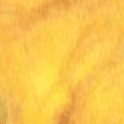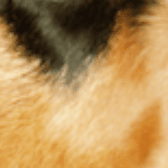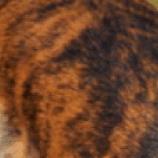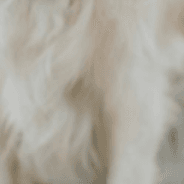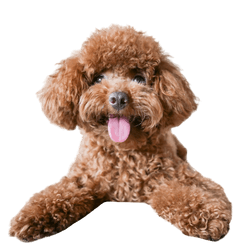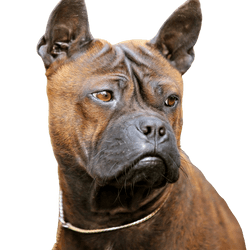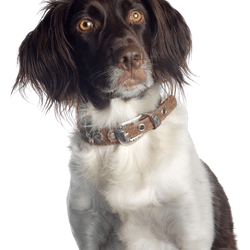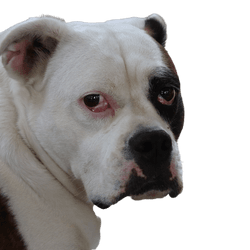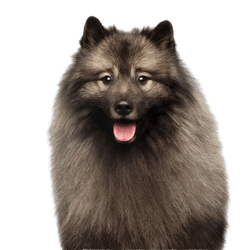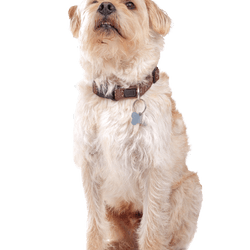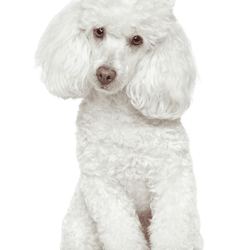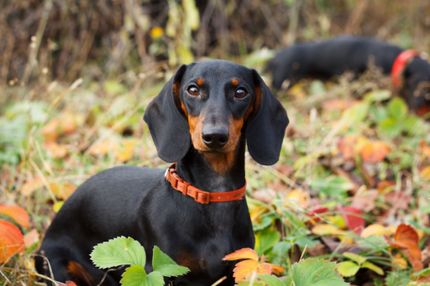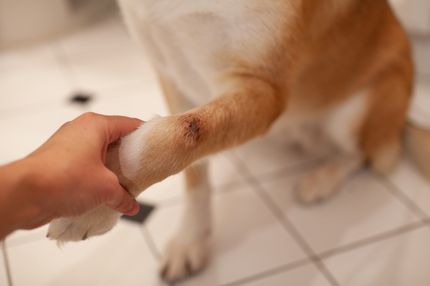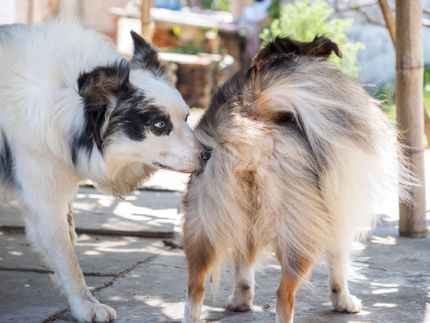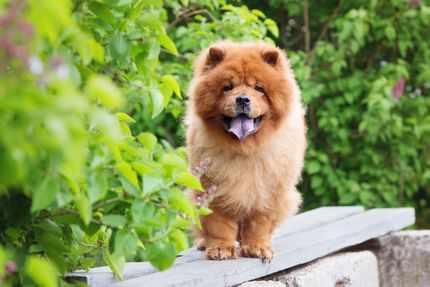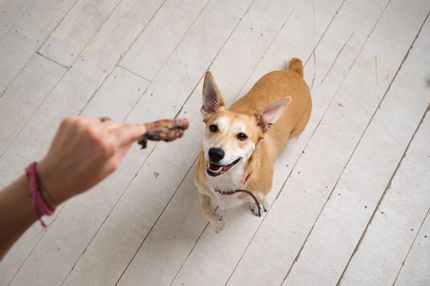Facts & Origin
The Ca de Bou, also known as the Mallorcan Mastiff or Perro de Presa Mallorquin, is an impressive breed of dog that originated on the Balearic island of Mallorca in Spain. Its roots date back to the 18th century when English mastiffs and bulldogs were crossed with native dogs to breed a strong, courageous dog for animal fighting. With the prohibition of animal fighting, the role of the Ca de Bou has changed and it is now a highly valued family dog and guard dog.
Alternative names and FCI classification
The breed is known by several names, including:
- Mallorcan Mastiff
- Perro de Presa Mallorquin
- Majorca Mastiff
In the FCI classification, the Ca de Bou belongs to Group 2 (Pinscher and Schnauzer - Molossoid and Swiss Mountain Dogs), Section 2.1 (Mastiff type). The breed number is 249.
| FCI Group | FCI section | Breed number |
|---|---|---|
| 2 | 2.1 | 249 |


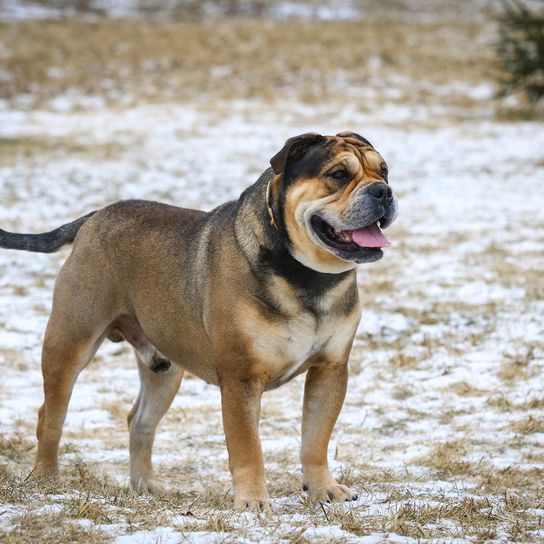
| Alternate Name | Perro dogo mallorquín, Mallorca Bulldog, Perro de Presa Mallorquín, Mallorca Dogue, Mallorca Mastiff |
| Origin | Spain |
| Life expectancy | 8 - 10 years |
| Care requirements | low-maintenance |
| Activity level | average |
| FCI group | Molossian type |
| AKC group | not recognised |
| KC group | not recognised |
Attitude, character and temperament of the breed
The Ca de Bou, also known as Perro de Presa Mallorquin or Mallorcan Mastiff, is a breed with a versatile temperament. Despite its rugged appearance and strong, muscular stature, the Ca de Bou has a calm and even-tempered nature. He is alert and protective, but always remains calm and in control.
Loyalty and Intelligence
Known for his loyalty, the Ca de Bou is extremely attached to his family and will do anything to protect them. His high intelligence makes him easily trainable, but at the same time requires mental stimulation to avoid under stimulation.
Social Behavior
The Ca de Bou is usually compatible with other dogs and pets if properly socialized. Early socialization and training are critical to fostering a well-adjusted and well-adjusted dog.
Requirements for the owner
As a potential owner, you should be willing to provide your Ca de Bou with plenty of exercise and mental stimulation. This dog is suitable for both country and city living, as long as he has plenty of opportunities to run around. Also, loving but consistent leadership is needed to make the Ca de Bou a happy and contented companion.
Character
Usage
Care requirements
The Perro de Presa Mallorquin, also known as Ca de Bou, has a short, dense coat that requires minimal grooming. Regular brushing - about once a week - will help remove dead hair and keep the coat healthy. This opportunity should also be taken to check for skin problems, parasites or other health signs. Despite its low coat maintenance, the Perro de Presa Mallorquin needs plenty of exercise and mental workout.
Health and Life Expectancy
The breed is generally healthy and robust with an average life expectancy of 10 to 12 years. However, as with many large dog breeds, hip dysplasia and elbow dysplasia can occur. Regular vet visits and appropriate health testing are important to detect and treat these and other potential health problems early.
Breeding and choosing a puppy
When choosing a breeder, you should look for reputable breeders who test their dogs for genetic diseases and are committed to improving the overall health and welfare of the breed. A good breeder will be happy to show you any health certificates of the parents and inform you of any breed-specific health problems.
In summary, the Perro de Presa Mallorquin is a low-maintenance but active dog that needs a loving home with plenty of room to run. With careful selection and proper care, this loyal companion will give its owner many years of enjoyment.

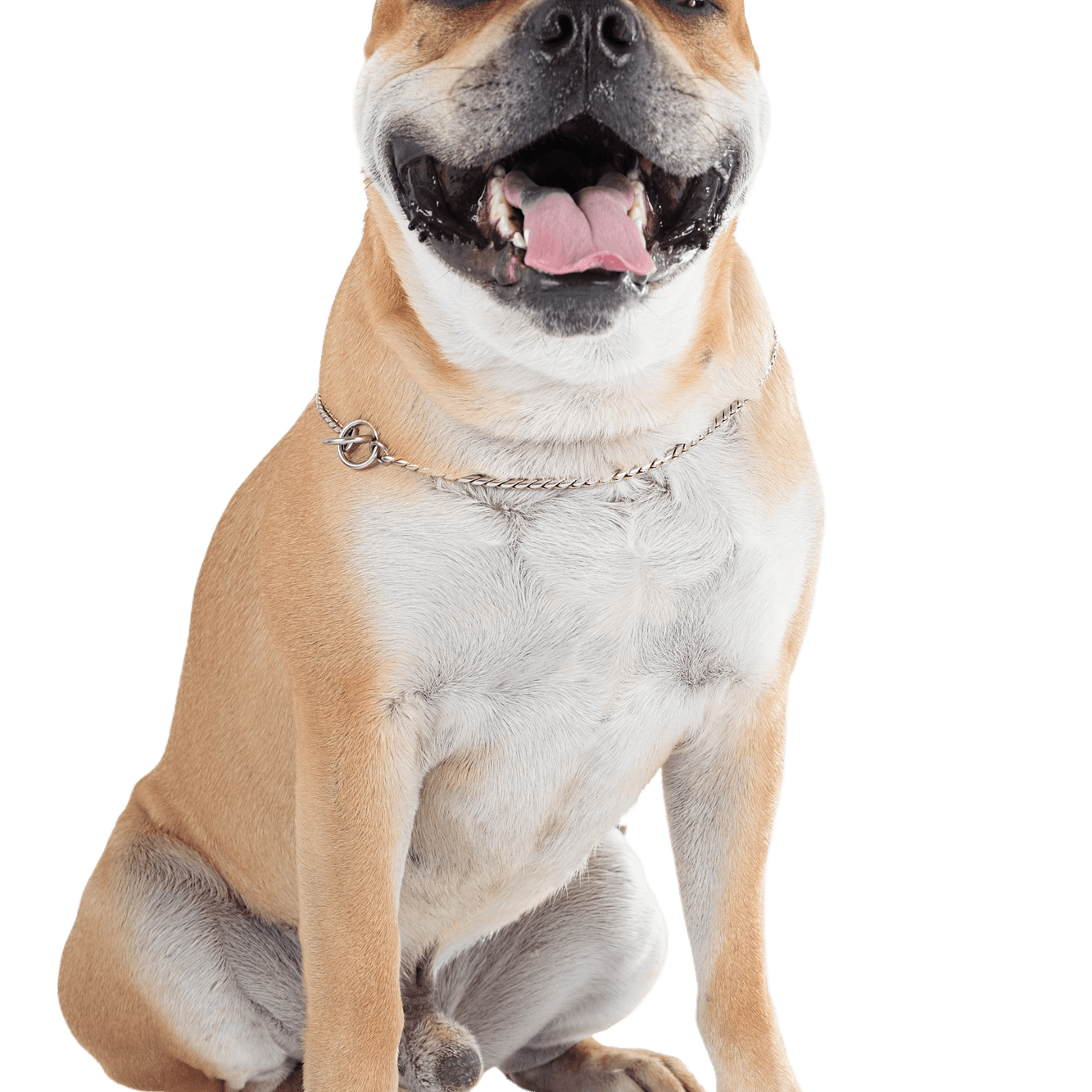
Ca de Bou - Care, coat, appearance, size and weight
Care and coat
The Ca de Bou, also known as the Perro de Presa Mallorquin, is characterized by its low-maintenance coat. Its short, smooth coat requires minimal grooming. A weekly brushing helps remove dead hair and keeps the coat clean and healthy. Despite his low coat maintenance, it should be noted that he sheds seasonally, especially during the alternating seasons between summer and winter coats.
Appearance and appearance
The Ca de Bou has a robust, strong appearance with a strong, muscular build. His head is large and square with a broad, deep muzzle. The ears are small and set high, traditionally they were often docked, however this is now prohibited in many countries. Coat color can vary and ranges from brindle to fawn to black.
Size and weight
The size and weight of the Ca de Bou can vary greatly, depending on gender and individual genetic factors. The average size for males is between 55 and 58 inches, while females are slightly smaller, with an average size of 52 to 55 inches. The weight of an adult male typically ranges from 35 to 38 kg, whereas females usually reach a weight of 30 to 34 kg .
| Gender | Height (cm) | Weight (kg) |
|---|---|---|
| Males | 55 - 58 | 35 - 38 |
| Bitches | 52 - 55 | 30 - 34 |
In summary, the Ca de Bou is an imposing and robust dog breed that requires consistent grooming and adequate exercise, despite its low-maintenance coat. With its strong, muscular stature, it is both an impressive guard dog and a loyal family companion.
| Fur length | short |
| Fur | flat coated |
| Ear shape | Triangle |
| Tail | lang |
| Anatomy | muscular, strong |
| Size ♀ | 55 - 52 cm |
| Weight ♀ | 34 - 30 kg |
| Size ♂ | 58 - 55 cm |
| Weight ♂ | 38 - 35 kg |
| Suitable For | - |
Colors
Known Diseases
Disc problems
Herniated disc in dogs (discopathy). Herniated discs or dachshund paralysis cause dogs severe pain.




